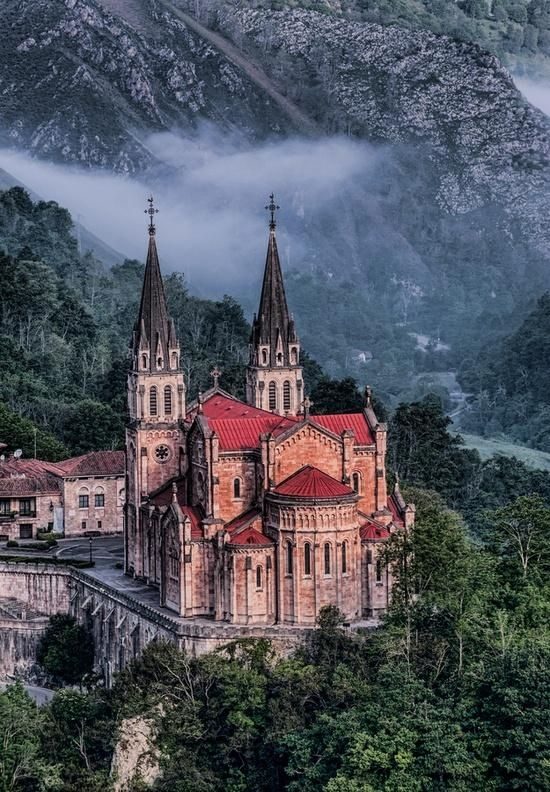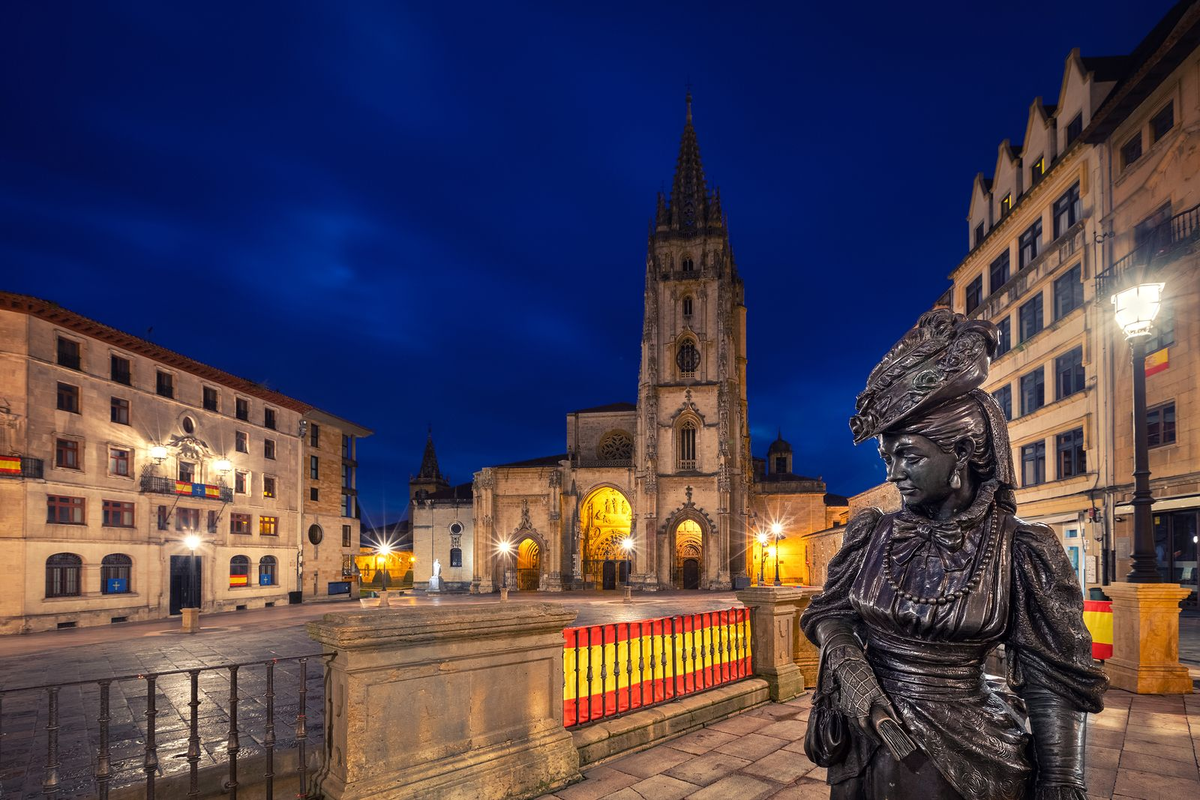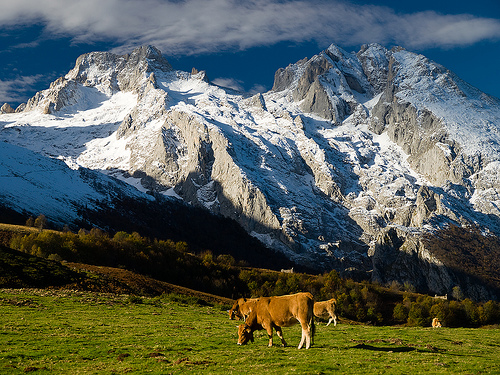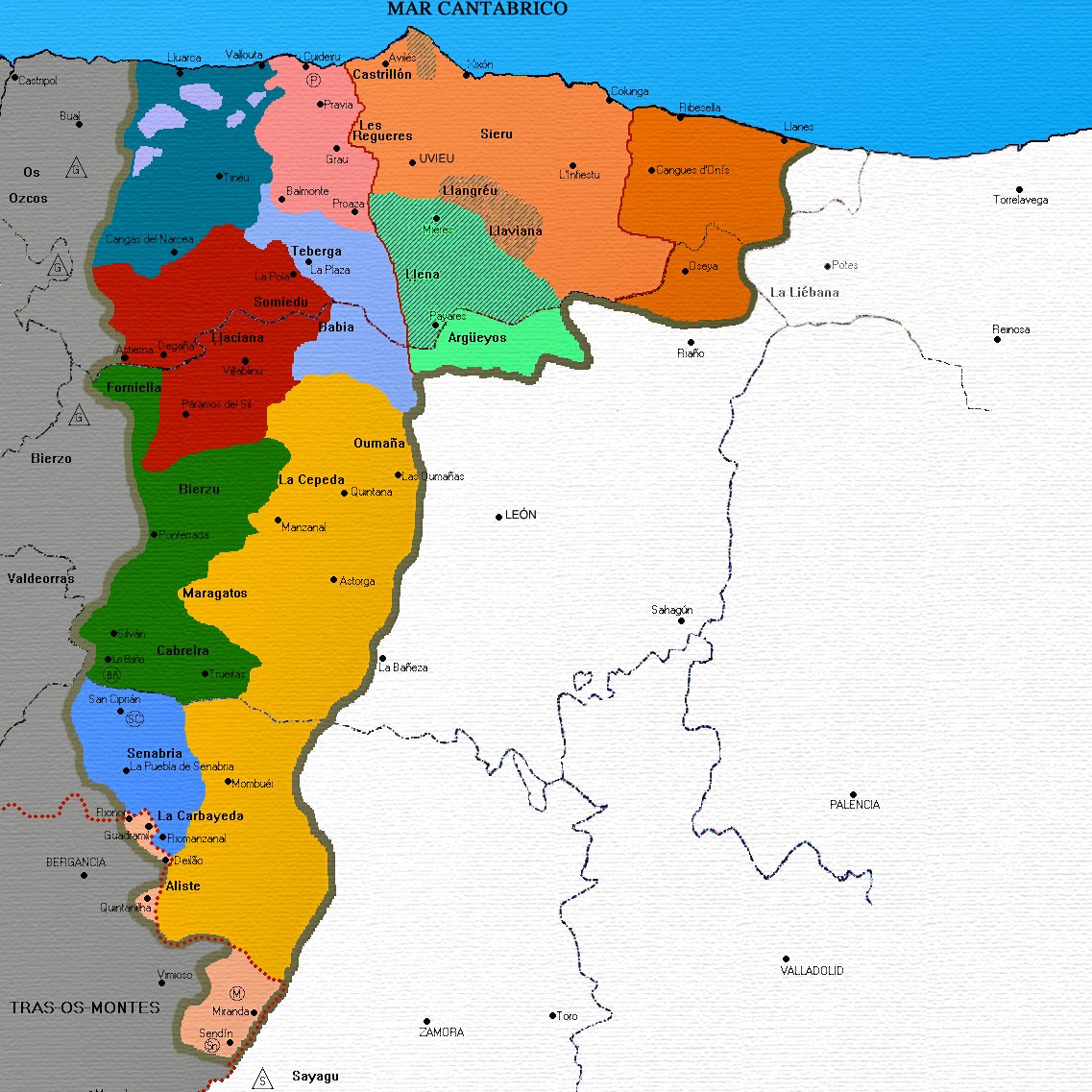As you might know, Spanish is widely spoken all over the world and, consequently, there are many varieties. It is quite a heterogeneous language, mostly in terms of pronunciation. In this thread, I& #39;ll try to summarize every single variety with its most remarkable features.
We will start our journey in Spain and, to get an overall picture of the varieties spoken in the country, I have marked the dialectal areas on a map (very badly, sorry).
I made those subdivisions of the Castilian dialect since the ones I found on the Internet were too generic.
First of all, let& #39;s talk about "Central castilian", which is spoken in most of Castilla y León, Cantabria, the north of Madrid and Guadalajara and La Rioja.
First of all, let& #39;s talk about "Central castilian", which is spoken in most of Castilla y León, Cantabria, the north of Madrid and Guadalajara and La Rioja.
This variety is considered by many to be "the purest", since the first texts in Spanish came from San Millán de la Cogolla (La Rioja) and for a long time, Valladolid (capital city of Castilla y León) has been considered to have the most neutral accent.
It is the variety used in the media and the one closest to "the standard". Their main features are:
 https://abs.twimg.com/emoji/v2/... draggable="false" alt="🔴" title="Roter Kreis" aria-label="Emoji: Roter Kreis">Phonic differentiation between /s/ and /θ/: casa / caza. This one is present in every variety of Spain but in the Andalusian and Canarian ones (neither in America).
https://abs.twimg.com/emoji/v2/... draggable="false" alt="🔴" title="Roter Kreis" aria-label="Emoji: Roter Kreis">Phonic differentiation between /s/ and /θ/: casa / caza. This one is present in every variety of Spain but in the Andalusian and Canarian ones (neither in America).
/ks/ for the graph "x": tasi [tási] instead of taxi [táksi]
[be.βé] as it would be pronounced in other areas.
subjunctive pluperfect: Hablase instead of hablara, hubiese hecho instead of hubiera hecho.
These are the most characteristic features, which in many of the following subdialects, reappear, although they add their own features. Let& #39;s hear a sample. Notice now they say: Valladoliz, el circo "le tenemos" (lo tenemos)...
Let& #39;s move on to the Aragonese dialect, spoken in Aragon, parts of La Rioja and villages of Valencia near Teruel. Their features are:
 https://abs.twimg.com/emoji/v2/... draggable="false" alt="🔴" title="Roter Kreis" aria-label="Emoji: Roter Kreis">Ascending intonation of the phrases, with lengthening of the final vowel (you& #39;ll notice it)
https://abs.twimg.com/emoji/v2/... draggable="false" alt="🔴" title="Roter Kreis" aria-label="Emoji: Roter Kreis">Ascending intonation of the phrases, with lengthening of the final vowel (you& #39;ll notice it)
Listen to this sample and notice the intonation of Aragonese speakers
Our next stop is: Castilla-La Mancha. Its variety is spoken mostly in Albacete and Ciudad Real, but also in Toledo, Cuenca, the south of Madrid and some villages in Valencia.
Its main features are:
 https://abs.twimg.com/emoji/v2/... draggable="false" alt="🔴" title="Roter Kreis" aria-label="Emoji: Roter Kreis">Aspiration of the intervocalic /s/, or rather the pronunciation of /j/ instead of /s/. This occurs especially when a /c/ follows the /s/: ejcalera, ejcuela, ej que...
https://abs.twimg.com/emoji/v2/... draggable="false" alt="🔴" title="Roter Kreis" aria-label="Emoji: Roter Kreis">Aspiration of the intervocalic /s/, or rather the pronunciation of /j/ instead of /s/. This occurs especially when a /c/ follows the /s/: ejcalera, ejcuela, ej que...
There is a famous TV show called "Muchachada nui" were they speak with that manchego accent and you can learn many words. In this excerpt, you will hear: mu& #39; (muy), ej& #39;acento (es acento), viejuno...
Next stop: Asturias, one of the most stunning areas. The Asturian dialect is spoken in Asturias and some villages in León, Zamora and Cantabria.
Asturian main features are:
 https://abs.twimg.com/emoji/v2/... draggable="false" alt="🔴" title="Roter Kreis" aria-label="Emoji: Roter Kreis">Feminine plural endings in -as are pronounced as -es and "las" turns into "les": las casas > les cases.
https://abs.twimg.com/emoji/v2/... draggable="false" alt="🔴" title="Roter Kreis" aria-label="Emoji: Roter Kreis">Feminine plural endings in -as are pronounced as -es and "las" turns into "les": las casas > les cases.
 https://abs.twimg.com/emoji/v2/... draggable="false" alt="🔴" title="Roter Kreis" aria-label="Emoji: Roter Kreis">Use of "ye" instead of "es": "ye una rapaza" (es una chica).
https://abs.twimg.com/emoji/v2/... draggable="false" alt="🔴" title="Roter Kreis" aria-label="Emoji: Roter Kreis">Use of "ye" instead of "es": "ye una rapaza" (es una chica).
Now it& #39;s time to hear a sample and notice how he says: el doctor receta-y, muller, "dos hores seguíes", escapen...
The Galician variety of Castilian is really similar to the Asturian one. They share most of its features but this one adds some particularities taken from the Galician language. It& #39;s only spoken in Galicia.
Its main features are the following:
 https://abs.twimg.com/emoji/v2/... draggable="false" alt="🔴" title="Roter Kreis" aria-label="Emoji: Roter Kreis">It tends to close the final vowels a lot, almost pronouncing /o/ and /u/; and /e/ and /i/ as equivalents.
https://abs.twimg.com/emoji/v2/... draggable="false" alt="🔴" title="Roter Kreis" aria-label="Emoji: Roter Kreis">It tends to close the final vowels a lot, almost pronouncing /o/ and /u/; and /e/ and /i/ as equivalents.
 https://abs.twimg.com/emoji/v2/... draggable="false" alt="🔴" title="Roter Kreis" aria-label="Emoji: Roter Kreis">Reduction of the consonantal groups in certain words: perfeto > perfecto.
https://abs.twimg.com/emoji/v2/... draggable="false" alt="🔴" title="Roter Kreis" aria-label="Emoji: Roter Kreis">Reduction of the consonantal groups in certain words: perfeto > perfecto.
 https://abs.twimg.com/emoji/v2/... draggable="false" alt="🔴" title="Roter Kreis" aria-label="Emoji: Roter Kreis">Velarization of the final -n: camión [ka& #39;mjoŋ]
https://abs.twimg.com/emoji/v2/... draggable="false" alt="🔴" title="Roter Kreis" aria-label="Emoji: Roter Kreis">Velarization of the final -n: camión [ka& #39;mjoŋ]
Okay, so it& #39;s time to hear some Galicians speaking and in the video you& #39;ll hear the intonation, and the pronunciation of some words: perfeto, un bucata (bocata)...
I will update this thread every day, it isn& #39;t finished!! But I need some time to find reliable information and samples. So please, if you want to read the whole thread, just bookmark it and check it out!

 Read on Twitter
Read on Twitter![[THREAD] SPANISH DIALECTS AND VARIETIES EXPLAINED [THREAD] SPANISH DIALECTS AND VARIETIES EXPLAINED](https://pbs.twimg.com/media/Eelbh0EXkAEJxm1.png)





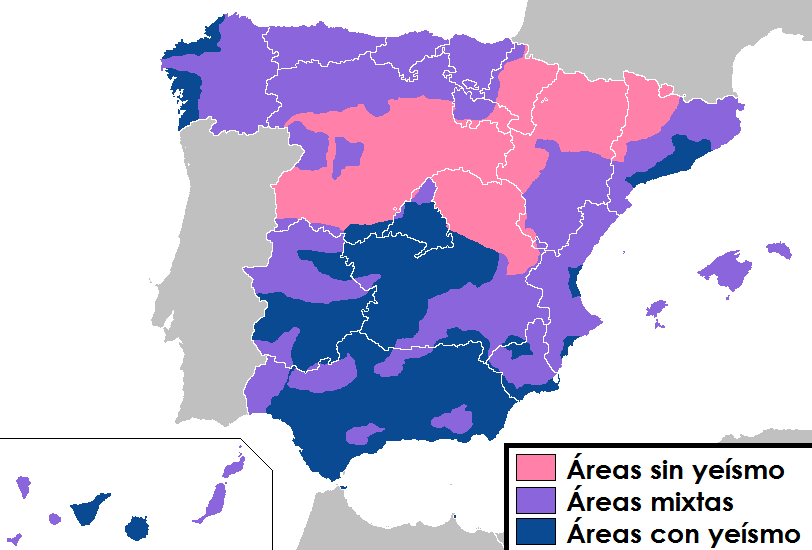 Pronunciation of the letter & #39;ll& #39; as & #39;y& #39;. Yes, technically their pronunciations are different, but only in some areas the differentiation is made (less and less)" title="https://abs.twimg.com/emoji/v2/... draggable="false" alt="🔴" title="Roter Kreis" aria-label="Emoji: Roter Kreis">Pronunciation of the letter & #39;ll& #39; as & #39;y& #39;. Yes, technically their pronunciations are different, but only in some areas the differentiation is made (less and less)">
Pronunciation of the letter & #39;ll& #39; as & #39;y& #39;. Yes, technically their pronunciations are different, but only in some areas the differentiation is made (less and less)" title="https://abs.twimg.com/emoji/v2/... draggable="false" alt="🔴" title="Roter Kreis" aria-label="Emoji: Roter Kreis">Pronunciation of the letter & #39;ll& #39; as & #39;y& #39;. Yes, technically their pronunciations are different, but only in some areas the differentiation is made (less and less)">
 Pronunciation of the letter & #39;ll& #39; as & #39;y& #39;. Yes, technically their pronunciations are different, but only in some areas the differentiation is made (less and less)" title="https://abs.twimg.com/emoji/v2/... draggable="false" alt="🔴" title="Roter Kreis" aria-label="Emoji: Roter Kreis">Pronunciation of the letter & #39;ll& #39; as & #39;y& #39;. Yes, technically their pronunciations are different, but only in some areas the differentiation is made (less and less)">
Pronunciation of the letter & #39;ll& #39; as & #39;y& #39;. Yes, technically their pronunciations are different, but only in some areas the differentiation is made (less and less)" title="https://abs.twimg.com/emoji/v2/... draggable="false" alt="🔴" title="Roter Kreis" aria-label="Emoji: Roter Kreis">Pronunciation of the letter & #39;ll& #39; as & #39;y& #39;. Yes, technically their pronunciations are different, but only in some areas the differentiation is made (less and less)">
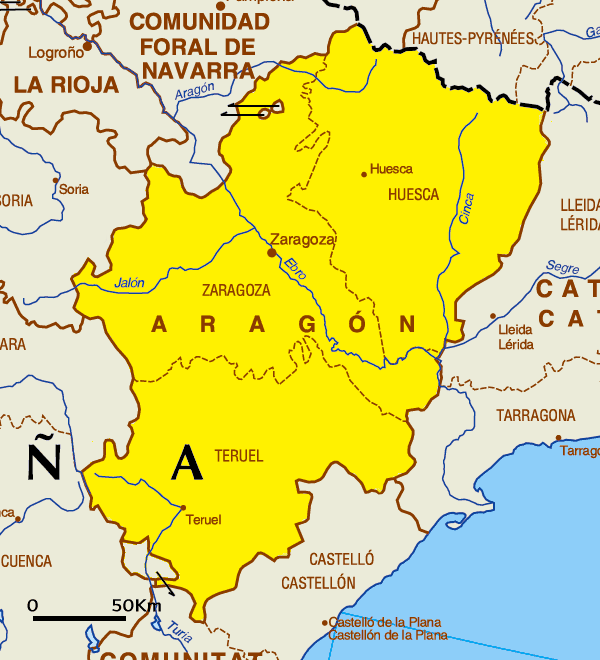 Ascending intonation of the phrases, with lengthening of the final vowel (you& #39;ll notice it)" title="Let& #39;s move on to the Aragonese dialect, spoken in Aragon, parts of La Rioja and villages of Valencia near Teruel. Their features are:https://abs.twimg.com/emoji/v2/... draggable="false" alt="🔴" title="Roter Kreis" aria-label="Emoji: Roter Kreis">Ascending intonation of the phrases, with lengthening of the final vowel (you& #39;ll notice it)">
Ascending intonation of the phrases, with lengthening of the final vowel (you& #39;ll notice it)" title="Let& #39;s move on to the Aragonese dialect, spoken in Aragon, parts of La Rioja and villages of Valencia near Teruel. Their features are:https://abs.twimg.com/emoji/v2/... draggable="false" alt="🔴" title="Roter Kreis" aria-label="Emoji: Roter Kreis">Ascending intonation of the phrases, with lengthening of the final vowel (you& #39;ll notice it)">
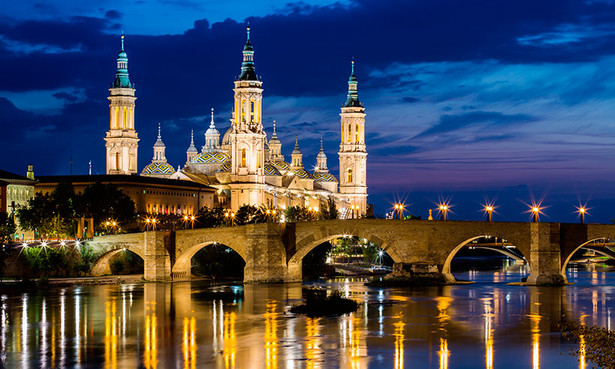 Ascending intonation of the phrases, with lengthening of the final vowel (you& #39;ll notice it)" title="Let& #39;s move on to the Aragonese dialect, spoken in Aragon, parts of La Rioja and villages of Valencia near Teruel. Their features are:https://abs.twimg.com/emoji/v2/... draggable="false" alt="🔴" title="Roter Kreis" aria-label="Emoji: Roter Kreis">Ascending intonation of the phrases, with lengthening of the final vowel (you& #39;ll notice it)">
Ascending intonation of the phrases, with lengthening of the final vowel (you& #39;ll notice it)" title="Let& #39;s move on to the Aragonese dialect, spoken in Aragon, parts of La Rioja and villages of Valencia near Teruel. Their features are:https://abs.twimg.com/emoji/v2/... draggable="false" alt="🔴" title="Roter Kreis" aria-label="Emoji: Roter Kreis">Ascending intonation of the phrases, with lengthening of the final vowel (you& #39;ll notice it)">
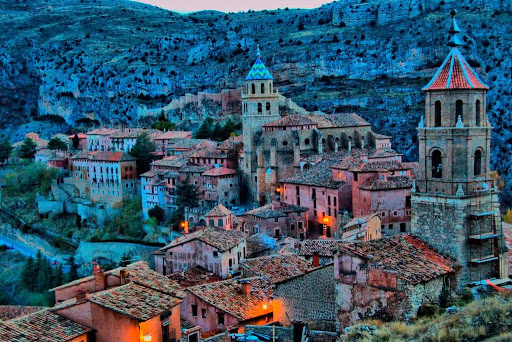 Ascending intonation of the phrases, with lengthening of the final vowel (you& #39;ll notice it)" title="Let& #39;s move on to the Aragonese dialect, spoken in Aragon, parts of La Rioja and villages of Valencia near Teruel. Their features are:https://abs.twimg.com/emoji/v2/... draggable="false" alt="🔴" title="Roter Kreis" aria-label="Emoji: Roter Kreis">Ascending intonation of the phrases, with lengthening of the final vowel (you& #39;ll notice it)">
Ascending intonation of the phrases, with lengthening of the final vowel (you& #39;ll notice it)" title="Let& #39;s move on to the Aragonese dialect, spoken in Aragon, parts of La Rioja and villages of Valencia near Teruel. Their features are:https://abs.twimg.com/emoji/v2/... draggable="false" alt="🔴" title="Roter Kreis" aria-label="Emoji: Roter Kreis">Ascending intonation of the phrases, with lengthening of the final vowel (you& #39;ll notice it)">
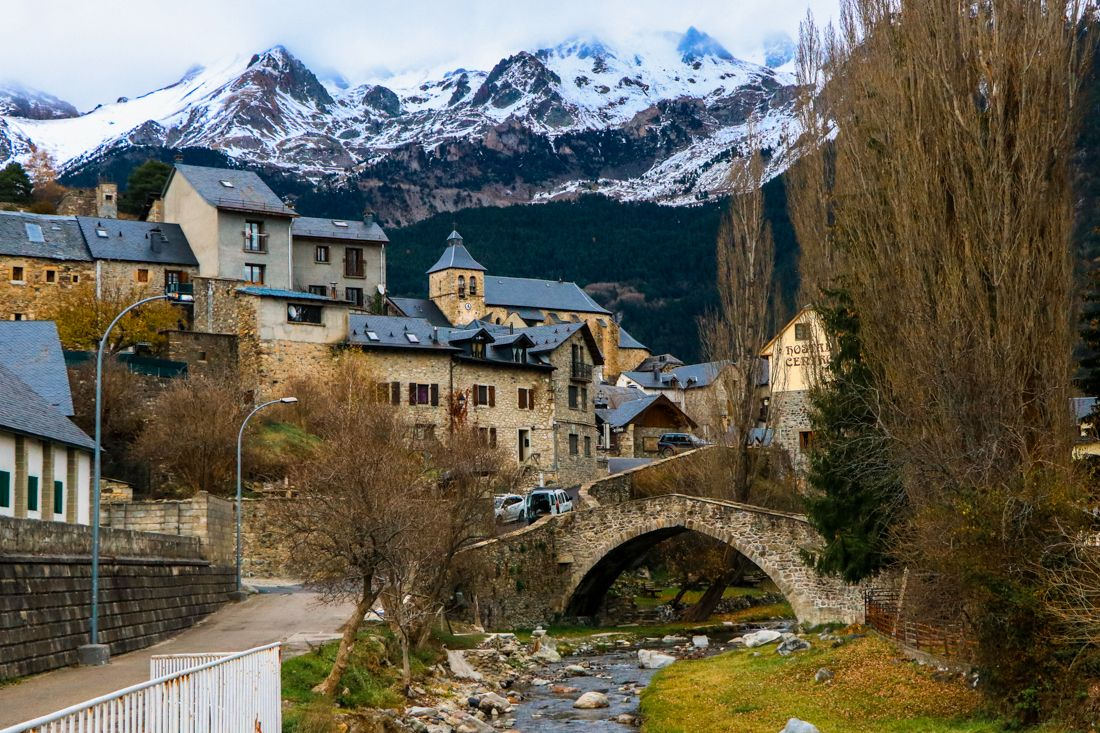 Ascending intonation of the phrases, with lengthening of the final vowel (you& #39;ll notice it)" title="Let& #39;s move on to the Aragonese dialect, spoken in Aragon, parts of La Rioja and villages of Valencia near Teruel. Their features are:https://abs.twimg.com/emoji/v2/... draggable="false" alt="🔴" title="Roter Kreis" aria-label="Emoji: Roter Kreis">Ascending intonation of the phrases, with lengthening of the final vowel (you& #39;ll notice it)">
Ascending intonation of the phrases, with lengthening of the final vowel (you& #39;ll notice it)" title="Let& #39;s move on to the Aragonese dialect, spoken in Aragon, parts of La Rioja and villages of Valencia near Teruel. Their features are:https://abs.twimg.com/emoji/v2/... draggable="false" alt="🔴" title="Roter Kreis" aria-label="Emoji: Roter Kreis">Ascending intonation of the phrases, with lengthening of the final vowel (you& #39;ll notice it)">






